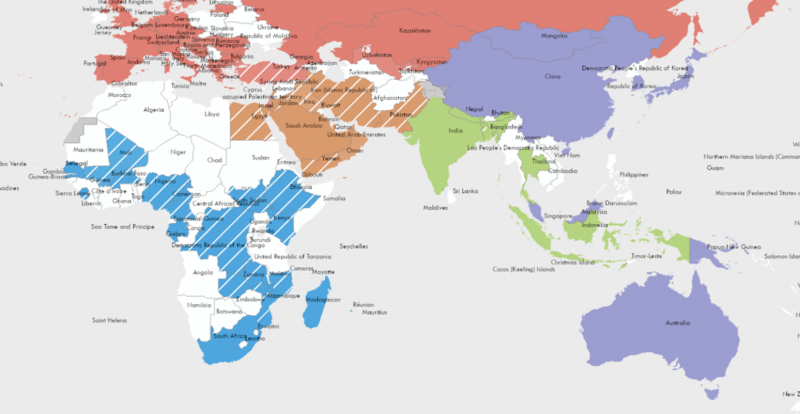
True extent of SARS-CoV-2 Infection through seroprevalence studies
Communicable Diseases
February 15, 2022
The WHO UNITY Studies Collaborator Group has published the largest ever systematic review and meta-analysis of standardized SARS-CoV-2 seroprevalence studies, showing that true infections of COVID-19 around the world far exceed reported cases.
Since the 2009 influenza A(H1N1) pandemic, WHO and partners have supported Member States to implement standardized sero-epidemiological investigations to facilitate international comparisons, address knowledge gaps and inform national public health measures, especially in low-and-middle income countries (LMICs). Key initiatives, including the Consortium for the Standardization of Influenza Seroepidemiology (CONSISE) and WHO’s Influenza Pandemic Special Investigations and Studies (IPSS), have had a crucial role in enhancing global pandemic preparedness against emerging respiratory threats, such as the Middle East Respiratory Syndrome coronavirus.
Most recently, WHO and partners have developed the UNITY Studies, a set of ten standardized protocols for early sero-epidemiological investigations that can be adapted to any resource setting to collect robust data on the COVID-19 pandemic and inform an evidence-based response.
In December 2021, the UNITY Studies and collaborators published a pre-print of the largest ever global meta-analysis of SARS-CoV-2 seroprevalence studies. It summarizes the results of studies aligned with the UNITY Studies’ standard “Population-based age-stratified sero-epidemiological (seroprevalence) investigation protocol” from January 2020 to October 2021. In total, the meta-analysis included data from 92 countries, including 53 LMICs and nearly half of the countries covered by the Global Humanitarian Response Plan for COVID-19.
Key findings from the meta-analysis include:
- About 1 in 4 (26%) people around the world had SARS-CoV-2 antibodies in April 2021 (due to infection or vaccination), suggesting that most of the global population remained susceptible to infection at that time.
- Seroprevalence differed by region: the proportion of those with SARS-CoV-2 antibodies varied from as low as 0.3% in WHO’s Western Pacific Region to as high as 57% in high-income countries in the Americas.
- Seroprevalence differed by age: children aged under 9 years and adults aged over 60 years were less likely to be seropositive than adults aged 20–29 years.
- COVID-19 surveillance and reporting largely under-estimates the true extent of infection and immunity, especially in LMICs, with an estimated seroprevalence to confirmed case ratio of 34:1 in the third quarter of 2020.